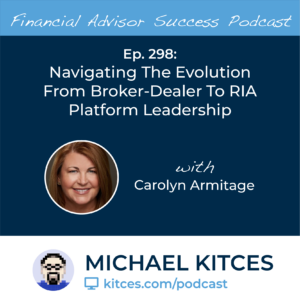There are many financial advisors who take issue with the financial advice offered by popular personal finance personalities such as Dave Ramsey. Some disagree on technical details like the plausibility (or purported lack thereof) of his assumptions for future investment returns, while others criticize broader elements of his approach (like his reliance on rules of thumb and a one-size-fits-all approach to building wealth). Whatever the reason, many advisors dismiss Ramsey’s guidance without considering why the advice is so popular in the first place.
But Dave Ramsey's huge following in the general public – and the number of people who testify that his methods have helped them make progress towards their financial goals – suggests that there is clearly something in his approach that resonates with many people. So for advisors, it may be worth exploring whether there is anything to be learned from Ramsey's approach to financial advice – even if they may disagree on the details, advisors may find in Ramsey's advice a new and perhaps better way to communicate with (and motivate) clients.
One core element of Ramsey's teachings is his "Baby Steps" process for building wealth, which lays out a seven-step sequence for everyone to follow: 1) build a $1,000 starter emergency fund; 2) pay off all (non-mortgage debt); 3) save a 3- to 6-month emergency fund; 4) save 15% of income for retirement; 5) save for children's education; 6) pay off the mortgage early; and finally, 7) build wealth and give.
Though many potentially valid criticisms of this process tend to concern technical details (e.g., the ideal size for an emergency fund, how much income should really be saved for retirement, etc.), what makes Ramsey's Baby Steps so popular among the general public is that they are easy to implement and are geared towards getting the individual to take action with as little friction as possible (in contrast to more advanced steps that would require additional research or analyses to complete). In other words, instead of focusing on a complex, customized plan based on a person's unique circumstances that might make for an ideal financial plan on paper, the Baby Steps are geared toward laying out a clear and inviting path for action – which might be more attractive (and effective) from a non-expert's perspective.
For advisors, the takeaway here is not about whether the Baby Steps offer the best advice for those who follow them, but that there could be merit in providing clients with a clear and cohesive set of steps (similar to a checklist) that helps them orient themselves in terms of where they currently stand in the process and what actions lie ahead. Additionally, a checklist-based framework may even help advisors be more efficient in their planning since it can be a way to systematize the planning process into a set of repeatable steps across many clients (particularly if the advisor serves a specific niche where the steps for building wealth might really be similar across the advisor's whole client base)!
The key point is that a checklist-style approach to financial planning can provide clients with a better understanding not only of what actions they should be taking immediately but also of the goals they are working towards in the long run. Focusing on action-oriented next steps rather than on the technical details behind them can help clients reconcile some of the knowledge gaps that might keep them from making progress toward their goals.

 Welcome back to the 299th episode of the Financial Advisor Success Podcast!
Welcome back to the 299th episode of the Financial Advisor Success Podcast! Welcome back to the 298th episode of the Financial Advisor Success Podcast!
Welcome back to the 298th episode of the Financial Advisor Success Podcast!
